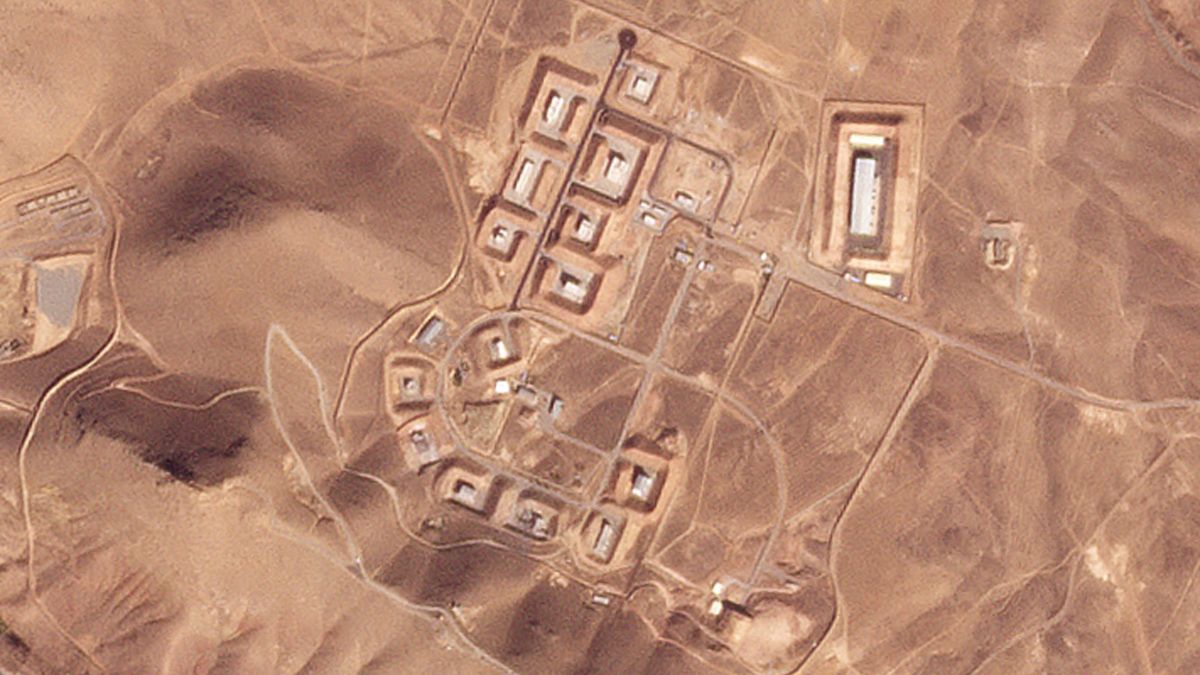Dubai: An Israeli strike on Iran damaged facilities at a secret military base southeast of the Iranian capital that experts have linked in the past to Tehran’s former nuclear weapons program and at another base linked to its ballistic missile program, photographs show. satellite images analyzed Sunday by The Associated Press. . Some of the damaged buildings were at Iran’s Parchin military base, where the International Atomic Energy Agency suspects Iran has in the past tested high explosives that could activate a nuclear weapon. Iran has long insisted that its nuclear program is peaceful, although the IAEA, Western intelligence agencies and others say Tehran had an active weapons program until 2003.
The other damage could be seen at the nearby Khojir military base, which analysts believe hides a system of underground tunnels and missile production sites. Iran’s military has not acknowledged damage in either Khojir or Parchin from Israel’s strike early Saturday, although it has said the attack killed four Iranian soldiers working on the country’s air defense systems.
Iran’s mission to the United Nations did not immediately respond to a request for comment, nor did the Israeli military.
Israeli attack ‘should neither be exaggerated nor minimized’: Iran’s Supreme Leader
However, Iranian Supreme Leader Ayatollah Ali Khamenei told an audience on Sunday that the Israeli attack “should not be exaggerated or minimized,” stopping short of calling for an immediate retaliatory strike. Israeli Prime Minister Benjamin Netanyahu said separately on Sunday that Israel’s strikes “severely harmed” Iran and that the bombing “achieved all of its objectives.” It is not yet clear how many sites in total were targeted by the Israeli attack. There have been no images of the damage, so it has so far been released by Iran’s military.
Iranian officials have identified affected areas in the provinces of Ilam, Khuzestan and Tehran. Burned fields could be seen on Saturday in Planet Labs PBC satellite images around Iran’s Tange Bijar natural gas production site in Ilam province, although it was not immediately clear if it was related to the attack. Ilam Province is located on the Iran-Iraq border in western Iran. The most telling damage could be seen in Planet Labs images of Parchin, about 40 kilometers southeast of central Tehran, near the Mamalu Dam. There, one structure appeared completely destroyed while others appeared damaged by the attack.
In Khojir, about 20 kilometers from central Tehran, damage to at least two structures could be seen in satellite images.
Analysts such as Decker Eveleth of the Virginia-based CNA think tank, Joe Truzman of the Washington-based Foundation for Defense of Democracies, and former United Nations weapons inspector David Albright, as well as other open source experts, They identified for the first time the damage to the bases. . The locations of the two bases correspond to videos obtained by the AP that show Iranian air defense systems firing nearby early Saturday.
In Parchin, the Albright Institute for Science and International Security identified the destroyed building against a mountainside as “Taleghan 2.” He said a file of Iranian nuclear data previously seized by Israel identified the building as housing “a smaller, elongated high-explosive chamber and an X-ray system for examining small-scale high-explosive evidence.” “Such tests may have included high explosives that compress a natural uranium core, simulating the initiation of a nuclear explosive,” a 2018 report from the institute says.
In a message posted on social platform its hasty and secret renovation efforts following the IAEA’s request for access to Parchin in 2011.”
It is unclear which equipment, if any, would have been inside the “Taleghan 2” building early Saturday morning. There were no Israeli attacks on Iran’s oil industry, its nuclear enrichment sites or its nuclear power plant in Bushehr during the assault.
Rafael Mariano Grossi, who heads the IAEA, confirmed this in X, saying that “Iran’s nuclear facilities have not been hit.” “The inspectors are safe and continuing their vital work,” he added. “I urge caution and restraint in the face of actions that could jeopardize the security of nuclear and other radioactive materials.”
Other buildings destroyed in Khojir and Parchin likely included a warehouse and other buildings where Iran used industrial mixers to create the solid fuel needed for its extensive ballistic missile arsenal, Eveleth said.
In a statement issued immediately after Saturday’s attack, the Israeli military said it targeted “missile manufacturing facilities used to produce the missiles that Iran fired at the State of Israel over the past year.”
Destruction of those sites could greatly disrupt Iran’s ability to manufacture new ballistic missiles to replenish its arsenal after the two attacks on Israel. Iran’s paramilitary Revolutionary Guard, which oversees the country’s ballistic missile program, has remained silent since Saturday’s attack.
Gen. Kenneth McKenzie, then commander of the U.S. military’s Central Command, estimated that Iran’s overall ballistic missile arsenal, which includes short-range missiles that cannot reach Israel, was “more than 3,000,” in Senate testimony. from the United States in 2022. Since then, Iran has fired hundreds of missiles in a series of attacks. No videos or photographs have been posted on social media of missile parts or damage to civilian neighborhoods after the recent attack, suggesting that the Israeli strikes were much more precise than Iran’s ballistic missile bombings against Israel in April and October. . Israel resorted to aircraft-launched missiles during its attack.
However, one factory appeared to have been hit in the industrial city of Shamsabad, just south of Tehran, near Imam Khomeini International Airport, the country’s main gateway to the outside world. Online videos of the damaged building corresponded to the address of a company known as TIECO, which advertises itself as a manufacturer of advanced machinery used in Iran’s oil and gas industry. TIECO officials asked the AP to write a letter to the company before answering questions. The company did not immediately respond to a letter sent to it.
(With contributions from the agency)
Disclaimer:
The information contained in this post is for general information purposes only. We make no representations or warranties of any kind, express or implied, about the completeness, accuracy, reliability, suitability or availability with respect to the website or the information, products, services, or related graphics contained on the post for any purpose.
We respect the intellectual property rights of content creators. If you are the owner of any material featured on our website and have concerns about its use, please contact us. We are committed to addressing any copyright issues promptly and will remove any material within 2 days of receiving a request from the rightful owner.

